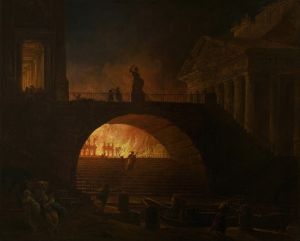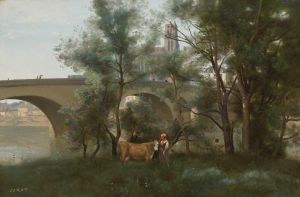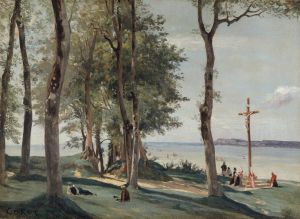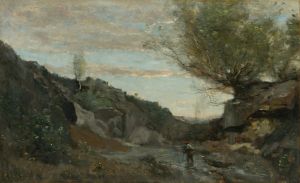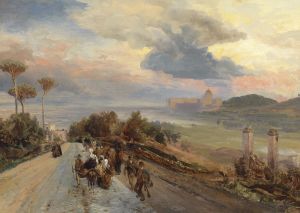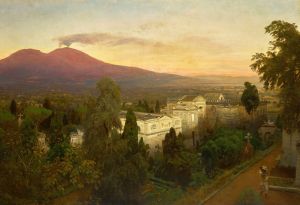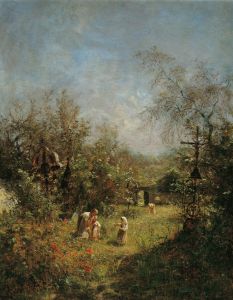
Rome; Terrasse De La Villa Pamphili
A hand-painted replica of Jean-Baptiste-Camille Corot’s masterpiece Rome; Terrasse De La Villa Pamphili, meticulously crafted by professional artists to capture the true essence of the original. Each piece is created with museum-quality canvas and rare mineral pigments, carefully painted by experienced artists with delicate brushstrokes and rich, layered colors to perfectly recreate the texture of the original artwork. Unlike machine-printed reproductions, this hand-painted version brings the painting to life, infused with the artist’s emotions and skill in every stroke. Whether for personal collection or home decoration, it instantly elevates the artistic atmosphere of any space.
Jean-Baptiste-Camille Corot was a prominent French landscape painter in the 19th century, known for his significant contributions to the Barbizon School and his influence on the Impressionist movement. One of his notable works is "Rome; Terrasse De La Villa Pamphili," which exemplifies his mastery in capturing the serene beauty of natural landscapes.
"Rome; Terrasse De La Villa Pamphili" is a painting that reflects Corot's deep appreciation for the Italian landscape, a theme that recurs throughout his oeuvre. Corot traveled to Italy multiple times, and these journeys profoundly influenced his artistic style. The Villa Doria Pamphili, located in Rome, is one of the largest landscaped public parks in the city, and it provided a rich source of inspiration for Corot. The villa itself, with its expansive gardens and terraces, offered a picturesque setting that Corot skillfully rendered in his work.
In this painting, Corot captures the tranquil atmosphere of the villa's terrace. His use of soft, muted colors and delicate brushwork creates a sense of calm and harmony. The composition is carefully balanced, with the foreground featuring lush greenery that gently leads the viewer's eye towards the distant horizon. Corot's attention to detail is evident in the way he depicts the play of light and shadow across the landscape, a technique that adds depth and dimension to the scene.
Corot's approach to landscape painting was innovative for his time. He often painted en plein air, or outdoors, which allowed him to observe and capture the natural light and atmosphere directly. This method was somewhat unconventional during the early 19th century, as many artists preferred to work in studios. However, Corot's dedication to painting outdoors enabled him to develop a keen sensitivity to the nuances of natural light, which became a hallmark of his work.
"Rome; Terrasse De La Villa Pamphili" is a testament to Corot's ability to convey the essence of a place through his art. His landscapes are not mere representations of physical locations; they are imbued with a sense of emotion and mood. This particular painting reflects the peacefulness and timeless beauty of the Roman countryside, inviting viewers to experience the serenity that Corot himself must have felt while creating the piece.
Throughout his career, Corot's work was celebrated for its poetic quality and technical skill. He was highly regarded by his contemporaries and later generations of artists, including the Impressionists, who admired his ability to capture the fleeting effects of light and atmosphere. Corot's influence can be seen in the works of artists such as Claude Monet and Camille Pissarro, who drew inspiration from his innovative techniques and approach to landscape painting.
In summary, "Rome; Terrasse De La Villa Pamphili" is a quintessential example of Jean-Baptiste-Camille Corot's landscape art. It showcases his talent for capturing the beauty and tranquility of nature, as well as his pioneering approach to painting en plein air. The painting remains an important work in the history of art, reflecting Corot's enduring legacy as a master of landscape painting.





